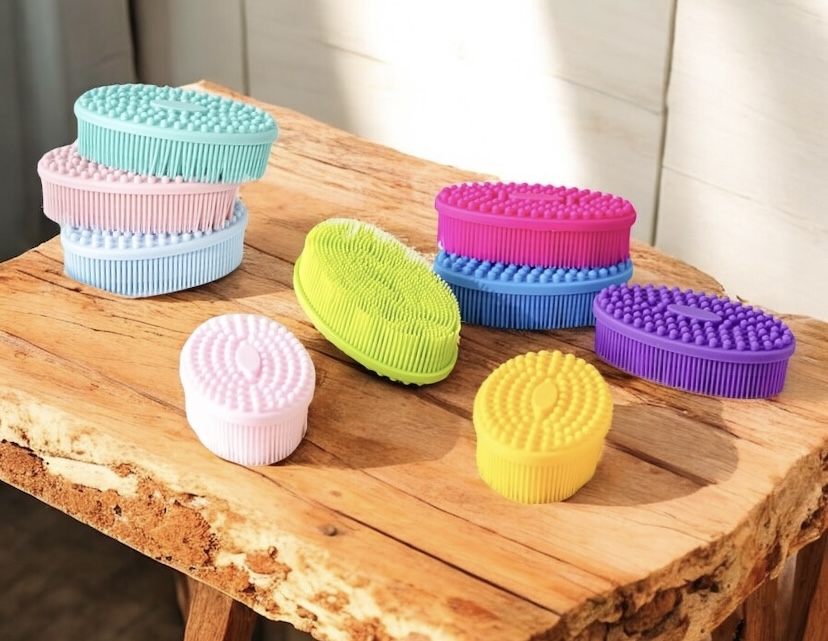Do you or a loved one often seek out deep pressure, crave firm touch, or struggle with focus and regulation? If so, you might be surprised by the simple yet profound benefits of a tool as unassuming as a sensory brush! Often a secret weapon in occupational therapy (OT) toolkits, sensory brushes offer a unique way to provide calming, organizing, and alerting sensory input.
Let’s dive into everything you need to know about these fantastic tools.
What Are Sensory Brushes?
At their core, sensory brushes are small, handheld tools designed to provide specific tactile and proprioceptive input to the skin. Unlike a hairbrush or a body brush for bathing, they are specifically engineered with dense, soft plastic bristles that deliver consistent, firm, and non-aversive pressure when stroked across the skin.
They are most famously associated with the “Wilbarger Protocol” (also known as the Brushing Protocol), a prescribed therapeutic technique used to help individuals tolerate tactile input, improve body awareness, and regulate their nervous system.
Why We Love Them
Sensory brushes are beloved by parents, therapists, and individuals for many reasons:
- Portable & Discreet: Small enough to fit in a pocket or purse, they can be used almost anywhere.
- Cost-Effective: Generally very affordable, making them an accessible sensory tool.
- Empowering: They allow individuals to take an active role in self-regulation.
- Versatile: Can be used for calming, alerting, or improving body awareness depending on the need and application.
- Non-Invasive: While providing significant input, the process is usually gentle and well-tolerated when introduced correctly.
Sensory Benefits: A Deep Dive
The magic of sensory brushes lies in their ability to impact key sensory systems:
- Tactile Input (Touch): The bristles provide consistent, firm touch input that can help desensitize individuals who are tactile defensive (i.e., sensitive to light touch) or provide desired input for those who seek strong tactile sensations. It helps the brain organize touch information more effectively.
- Proprioceptive Input (Body Awareness): The deep pressure applied by the brush stimulates the receptors in muscles and joints. This “heavy work” input helps the brain understand where the body is in space, leading to:
- Improved Body Awareness: Making movements more coordinated and intentional.
- Grounding: A feeling of being “settled” or “calm.”
- Regulation: Helping the nervous system shift from a state of overwhelm or under-arousal to a more optimal state.
- Calming & Organizing: For individuals who are overstimulated, anxious, or have difficulty transitioning, the rhythmic, deep pressure can have a profoundly calming and organizing effect on the nervous system. It can reduce fidgeting, improve attention, and decrease sensory overwhelm.
- Alerting & Focusing: Conversely, for those who are under-responsive, sluggish, or have difficulty staying attentive, the brush can provide alerting input to “wake up” the nervous system, improving focus and engagement.
Which Kind of Sensory Seekers Would Like Them?
Sensory brushes are particularly beneficial for individuals who:
- Seek Deep Pressure/Firm Touch: They love bear hugs, squeezing, tight clothing, or pressing down on things.
- Are Tactile Seekers: They enjoy touching various textures, may put non-food items in their mouth, or constantly fidget with their hands.
- Are Easily Overwhelmed: They become anxious or agitated in busy environments, struggle with transitions, or have meltdowns due to sensory overload.
- Have Difficulty Focusing: They seem “checked out,” struggle to pay attention, or are constantly moving.
- Exhibit Fidgety Behaviors: They tap, squirm, or constantly need to be doing something with their hands or body.
- Struggle with Body Awareness: They may bump into things, have poor coordination, or seem clumsy.
- Are Diagnosed With: Sensory Processing Disorder (SPD), Autism Spectrum Disorder (ASD), ADHD, or anxiety.
Types of Sensory Brushes
While the “Wilbarger Protocol” brush is the most well-known, there are a few variations to consider:
- The Wilbarger Protocol Brush (Therapressure Brush): This is the classic. It’s typically oval-shaped with dense, flexible plastic bristles set at an angle. It’s designed for consistent deep pressure and is meant to be used as part of a structured brushing program, often under the guidance of an occupational therapist.
- Textured Silicone Brushes/Scrubbers: These are increasingly popular and come in various shapes and sizes, often with different textured nubs or softer, wider bristles. While not typically used for the strict Wilbarger Protocol, they are excellent for general tactile exploration, bath time sensory input, or for individuals who prefer a slightly softer or varied sensation.
- Vibrating Brushes: Some brushes incorporate vibration for an added layer of sensory input. These can be particularly effective for individuals who need more intense alerting input, or for oral motor exploration (with appropriate attachments and supervision).
Our Top-Rated Picks
While we can’t recommend specific brands without knowing your exact needs, here are the types of sensory brushes that consistently get rave reviews for their effectiveness and quality:
- The Original Wilbarger-Style Therapressure Brush:
- Why it’s great: If you’re looking for the classic deep pressure input recommended for structured brushing protocols, this is your go-to. Look for one with firm, but soft enough, plastic bristles that are densely packed and comfortable to hold.
- What to look for: A sturdy handle and bristles that don’t easily fall out. Often comes in a vibrant color like blue or green.
- Versatile Multi-Textured Silicone Body Brushes:
- Why it’s great: Excellent for general sensory exploration, bath time, or for those who want a softer, more varied tactile experience than the traditional Wilbarger. They’re easy to clean and very durable.
- What to look for: Food-grade silicone, various textures on different sides, and an ergonomic grip.
- Portable Vibrating Sensory Brushes:
- Why it’s great: For individuals who need extra alerting input or enjoy vibration, these brushes add another dimension to the sensory experience. Some are specifically designed for oral motor work, while others are for skin input.
- What to look for: Durable construction, different vibration settings (if possible), and ease of use. If for oral use, ensure it’s food-grade and easy to clean.
Important Note: For specific therapeutic applications like the Wilbarger Protocol, always consult with an occupational therapist. They can assess individual needs, teach proper technique, and develop an effective program.
Similar Things People Might Like
If you or your loved one enjoys sensory brushes, you might also find comfort and benefit from these related sensory tools and activities:
- Weighted Blankets/Vests/Lap Pads: Provide consistent deep pressure input for calming and focus.
- Fidget Toys: Especially those with interesting textures, resistance, or squishy feedback (e.g., stress balls, textured rings, pop-its).
- Chewelry/Oral Motor Tools: For individuals who seek oral input (biting, chewing).
- Compression Clothing: Can provide consistent, calming deep pressure input throughout the day.
- Body Socks/Lycra Tubes: Offer full-body deep pressure and proprioceptive input by allowing stretching and movement against resistance.
- Joint Compressions: A therapeutic technique (often taught by an OT) that directly provides proprioceptive input to major joints.
- Massage Tools: Handheld massage balls, foam rollers, or even simple back scratchers can provide varied tactile and pressure input.
- Heavy Work Activities: Pushing, pulling, lifting, carrying, or crawling activities that engage large muscle groups.
Sensory brushes are a powerful example of how simple tools can make a significant difference in managing sensory needs, promoting regulation, and improving overall well-being. Whether you’re looking for a calming tool, a way to improve focus, or a therapeutic aid, exploring the world of sensory brushes just might be your next great discovery!


